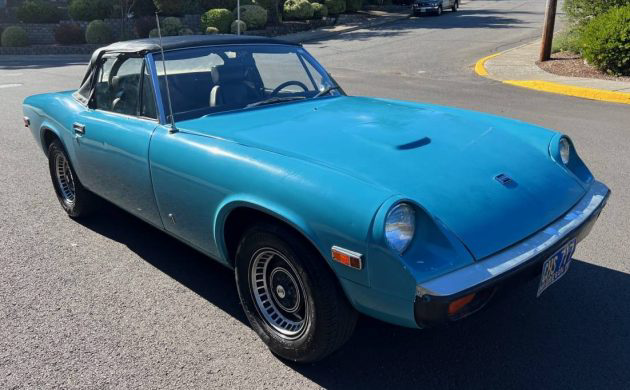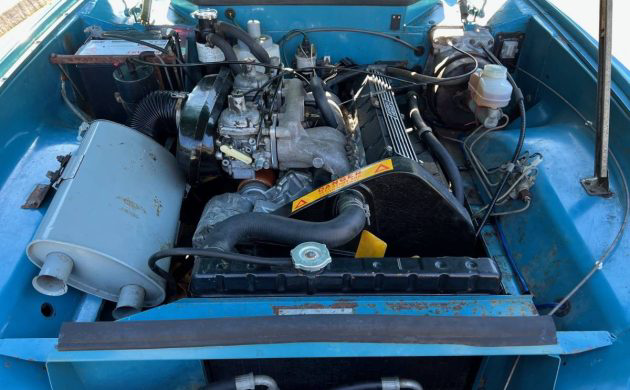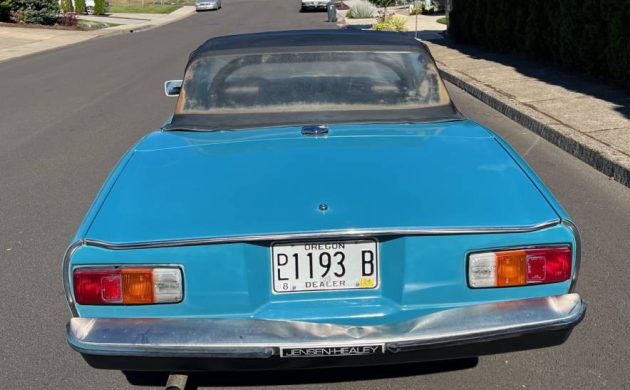The demise of the Austin-Healey 3000 led many enthusiasts to wonder whether there would ever be another Convertible British sports car bearing the illustrious Healey name. However, an American knight in shining armor rode to the rescue, becoming a major shareholder of Jensen and putting into place the people and strategies that resulted in cars like our feature 1973 Jensen-Healey. This is an original and unmolested classic with 16,000 miles on the clock. It isn’t perfect, leaving a new owner to choose between preservation and a straightforward cosmetic restoration. This Jensen is listed here on Craigslist in San Francisco, California. The seller has set their price at $8,900, and I must say a big thank you to Barn Finder ToddK for spotting this British beauty.
The Austin-Healey 3000 enjoyed a production run from 1959 until 1967. Most examples were exported to North America, where they found a ready market and buyers willing to spend money on a classic British sports car. However, the specter of evolving safety and emission regulations soon showed that the changes required to comply would be prohibitively expensive, and production ended. It seemed there may never be another volume-selling car bearing the Healey name, but the planets aligned to ensure a successor would emerge. Donald Healey had been negotiating with Jensen on a joint project, and his cause received an unexpected boost when San Francisco businessman and vehicle importer Kjell Qvale became a majority shareholder in Jensen Motors. A significant portion of his company’s profits was derived from importing and selling British sports cars, so he immediately installed Healey as the Chairman of Jensen so work could commence on a replacement for his beloved 3000. The result was the Jensen-Healy, which was unveiled in 1972. Our feature car rolled out of the Jensen factory in West Bromwich in 1973. The paint shade is a slight mystery, although it isn’t the first Healey from this era I have seen wearing it. It doesn’t appear on the company’s color charts, which is unsurprising. While Jensen had a “stock” selection from which buyers could choose, their bespoke program allowed scope for Special Orders. That may be the case here because it resembles a Rootes Group shade from this era called Carib Blue. The paint looks patchy and slightly baked, which is unsurprising after years of exposure to the Californian sun. However, the same climate that abused the paint has preserved the steel beneath admirably. The exterior shows no evidence of significant problems, while the underside shots confirm this Healey is rock-solid. There are a few bumps and bruises, but nothing demanding panel replacement. The soft-top looks okay for a survivor-grade vehicle, although the cloudy back window might motivate the new owner to splash $500 on a replacement top. The trim is in good order, and there are no glass issues.
Jensen investigated various engine options to power its new model, but it repeatedly hit stumbling blocks due to supply or performance shortcomings. However, a deal was struck with Colin Chapman for his Lotus 907 twin-cam four-cylinder powerplant. It produces 140hp and 130 ft/lbs of torque. This feeds to the rear wheels via a four-speed manual transmission. With only 2,116 lbs to shift, that sweet little twin-cam can propel the Healey through the ¼-mile in 16.2 seconds as the car winds its way to 120mph. The seller claims this little survivor has a genuine 16,000 miles on the clock, although the brevity of their listing description means there is no indication of whether they hold verifying evidence. Potential buyers will be pleased to learn it is a turnkey proposition that runs and drives perfectly. Flying in for a Californian holiday before undertaking a road trip home behind the wheel of this Healey is a viable and enticing option.
Apart from potential rust issues, the other aspect of a Jensen-Healey prone to problems is the interior. UV rays can take a toll on upholstery and plastic, and it is not uncommon to find these classics with pretty trashed interiors. This survivor has avoided that fate. Apart from some slight carpet fading, there is little to criticize. The seats look good, the door trims should respond to a thorough cleaning, and the dash, pad, and console are excellent. There are no aftermarket additions, with this Healey retaining its original pushbutton radio.
The Jensen-Healey should have been a sales success that guaranteed the company a long and prosperous future. It brought together some of the greatest names in British automotive history, offering a sports car with crisp styling and respectable performance. However, various factors combined to bring the company to its knees. The last Healey rolled off the line in 1976, and the company’s factory doors closed shortly after. Our feature car is a testament to a bold but doomed project, and its solid nature makes it an ideal candidate for a DIY restoration. There are no obvious issues that would cost a fortune to address, and the seller’s price is affordable. Are those factors enough to tempt you to pursue it further? I won’t blame you if you do.







Interesting air intake system.
…so if this is the same motor found in the Lotus Esprit, wondering if….hmmm.
Yes it is
Seems to be a steal. I’m sure it will sell fast. If I wasn’t 3000 miles away I would snap it up.
I also had one of these. Oregon plates but in CA. It does have the stock wheels and a rollbar. Looks very complete under the hood.
Having a 70s MGB, naturally, any British roadster from that period was worth noting. The J-H was the answer to the question nobody asked. 1st, as usual, it wasn’t cheap. It sold new for around $4200 bucks, when a MGB was $1000 less. It was supposed to be marketed between the TR6 and the Jag, but fell short. The motor has belt driven cams, and troublesome and the car was no 3000, that’s for sure. I read only about 10,000 roadsters were built in the 4 years, making it a flop, and much nicer British roadsters can and could be had. The low mileage tells a story right there.
The mechanical problems not withstanding, the styling wasn’t real “crisp” to me. Rear end not bad but the rest of the car looks like a committee of amateur designers all working in separate parts of the world did the rest. Front end looks like a Chrysler product.
Wish there was documentation that the mileage is real. Weird that it has Oregon dealer plates.
I remember returning from Vietnam, pulling into Alameda California and going with one of my shipmates to pick up his brand new 1974 Jensen Healy. Within a week we took off in his new car and drove the length and breath of California. Good memories, the car ran like a Swiss watch. My buddy was “getting out” of the Navy, he drove that car home to DesMoines Iowa without a single problem. I lost touch with him a couple of years later, but must say the short time I enjoyed as a passenger in that car it truly impressed me with its performance and reliability.
Highly-under-rated cars. This one still has the original air cleaner and cam drive cover, which are usually missing, but the rear bumper is tweaked. A good deal on a “different” car.
People commenting on the Oregon plates, I see a lot of , out of state dealer plates. living in Oregon, some dealerships have other lots/ dealerships the span across the state into Washington and California. A slow car to sale in one location maybe will have a better chance to sale in another location and like a warmer climate especially a roadster or a convertible. Some dealerships move cars across state lines quite often for this. You see this often with dealerships dealing in classic cars.